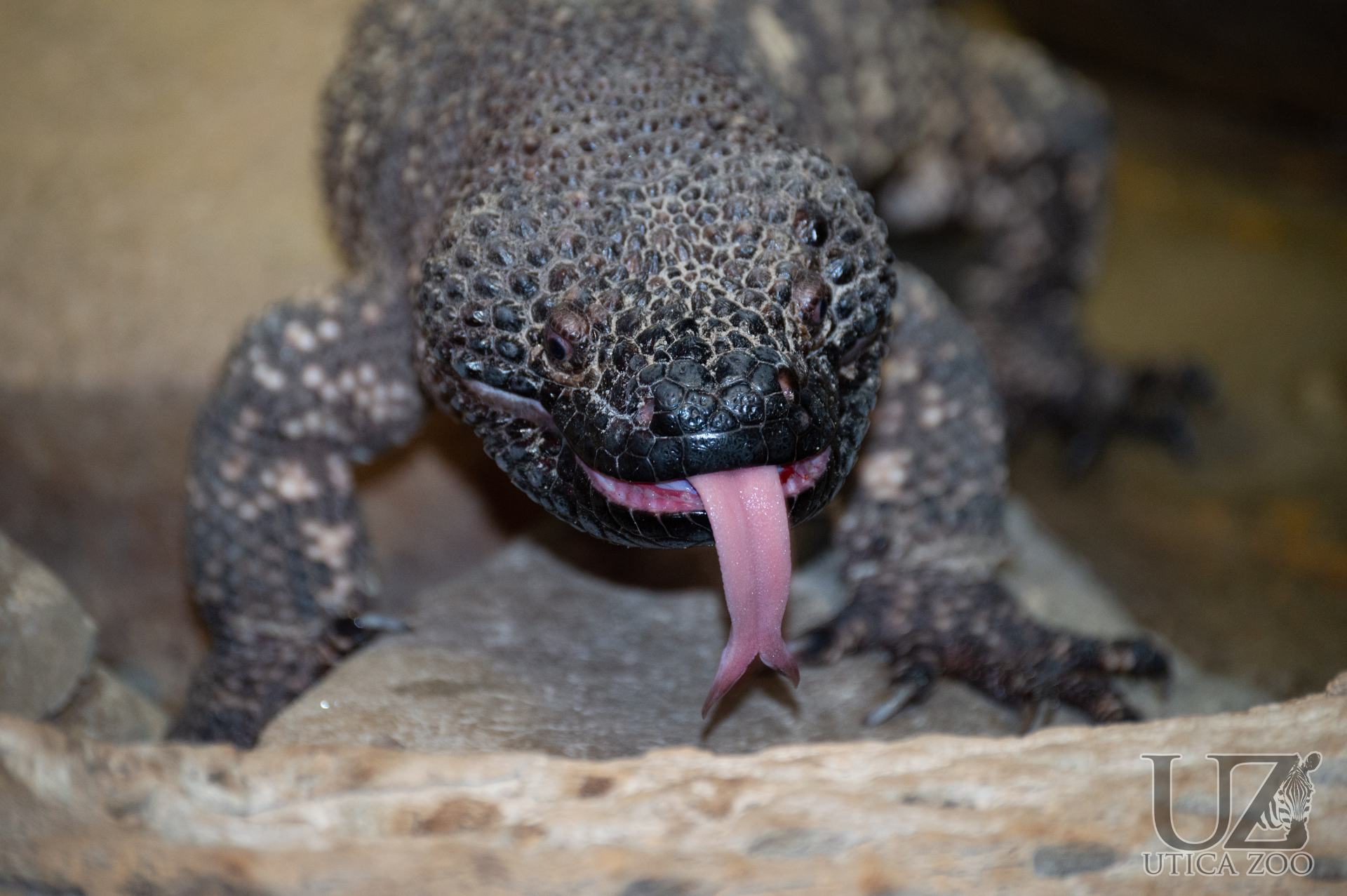Mexican Beaded Lizard

Basic Information:
Scientific Name: Heloderma horridum
Habitat: Mexican beaded lizards can be found through the deserts and forests of Mexico and Guatemala.
Diet: Mexican beaded lizards primarily eat reptile and bird eggs.
Size: 1.8 to 3 feet long
Weight: 3 to 4.4 pounds
Lifespan: About 20 to 40 years
Distribution Map:
I.U.C.N. Conservation Status:

What does this mean?
Least Concern – a species determined by the International Union for Conservation of Nature (I.U.C.N.) to be pervasive, abundant, and thriving.
Our Mexican Beaded Lizards:
Santiago (Male) – Born March 26, 2016
Rocaille (Undetermined) – Born March 25, 2016
About Mexican Beaded Lizards:
First recorded by German zoologist Arend Wiegmann in 1829, the Mexican beaded lizard was given its genus name Heloderma (meaning “studded skin”) based on its bumpy appearance. However, local humans have a much more superstitious outlook on these lizards and tend to kill them on sight. These superstitions include the ability to cause lightening strikes with its tail and the ability to make a pregnant woman miscarry merely by looking at her. While these two claims are false, the Mexican beaded lizard is unique in that it is one of the only two venomous lizards in the world. Today, the Mexican beaded lizard has been put under protection plans by the Mexican and Guatemalan governments due to the popularity of the lizard amongst poaching and illegal pet trading groups.
Did You Know?!
- Mexican beaded lizards hide in self-dug or pre-existing burrows during the day and become active at night.
- Mexican beaded lizards are 1 of the only 2 species of venomous lizards in the world. The other venomous lizard is their cousin: the Gila Monster!
- The Mexican beaded lizard uses its venom not only to kill its prey, but also to subdue potential predators such as humans, coyotes, and raptors.
- Mexican beaded lizards are only active from April to mid-November, hibernating the rest of the year.
- Mexican beaded lizards are threatened due to habitat loss and the illegal pet trade, but they are still listed as “LEAST CONCERN” by the IUCN.
